A Fizeau interferometer can be described as a laser interferometer configuration that is often used for quantifying the transmission quality and surface shape of optics and optical-grade surfaces.
A beam splitter in a Fizeau laser interferometer splits the beam from a laser source. The “reference beam” is guided toward a high-quality surface, while the “test beam” is guided toward the test surface or via a test optic to a high-quality return mirror. Importantly, the two beams use the same optics, and the reflected return beam cancels out errors picked up in the outbound path.
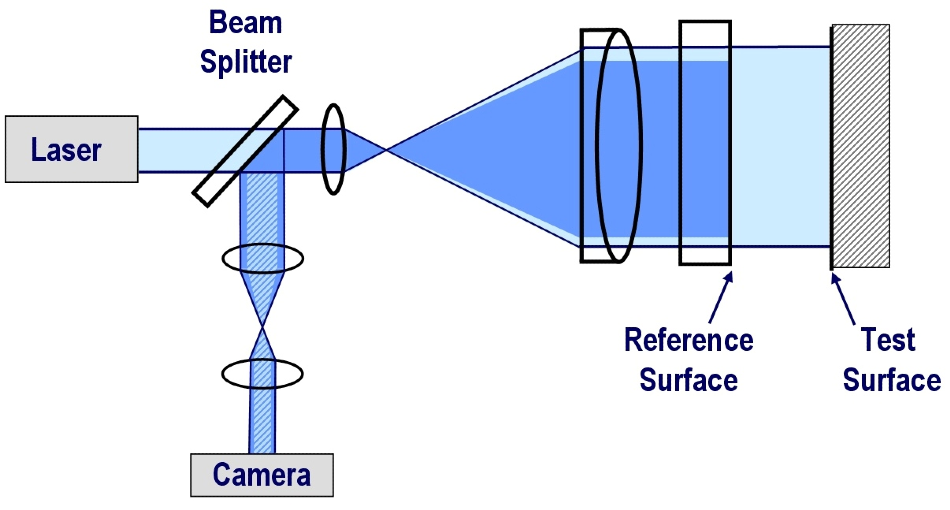
Image Credit: 4D Technology.
Fizeau Interferometers Measure Surface Heights or Transmitted Wavefront Error
When passing back through the beam splitter, the two reflected beams recombine at the sensor (camera). Upon recombining, the reflected beams create an interference pattern. This interference pattern is caused by changes in phase induced by the variations between the test surface and “perfect” reference surface. This interference pattern is recorded by the sensor as a single measurement frame.
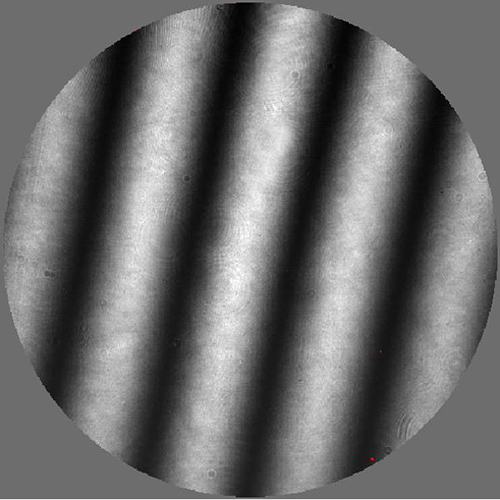
Image Credit: 4D Technology.
By integrating many frames of data, users can quantify the heights of all points on the test surface, or measure the change in wavefront induced by the beam traveling via the optic. Multiple frames can be acquired in many different ways.
Temporal Phase-Shifting Fizeau Interferometer
The reference in a “phase-shifting” Fizeau interferometer is shifted in accurate increments corresponding to the test surface. Such increments are tens to hundreds of nanometers, that is, fractions of the source wavelength. After each incremental move, the instrument achieves a frame of data. The entire sequence of measurement frames is subsequently utilized to determine the wavefront error or the height of the surface.
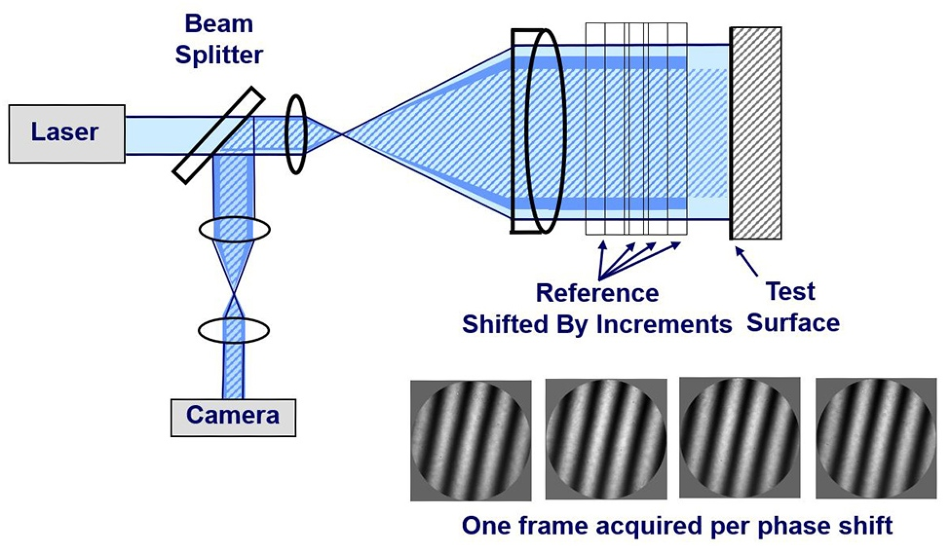
Image Credit: 4D Technology.
Phase-Shifting Interferometers are Limited by Vibration and Turbulence
In phase-shifting interferometers, time elapses while acquiring the measurement data, and this represents a certain challenge. While the time is short (hundreds or thousands of milliseconds), it is sufficiently long to make air turbulence and vibration that destroy or degrade the measurement.
To resolve the setting, temporal phase-shifting systems should be separated from turbulence and vibration. This is generally achieved by shifting the systems from the production floor into a specialized metrology laboratory, and by utilizing heavy vibration isolation tables. But measures like these would not only be costly but would also need valuable production space.
A Dynamic Fizeau Interferometer Overcomes Vibration and Turbulence
All phase shifting is achieved spatially in a dynamic Fizeau interferometer, and not over time. When an element is introduced before the camera, the data is separated into four phases that can be imaged concurrently by the sensor.
Very short acquisition time means that turbulence and vibration are effectively frozen, creating exceptional measurements in spite of the turbulence or vibration.
4D Technology was the first to develop Dynamic Interferometry®. A micropolarizer sensor array in 4D dynamic Fizeau interferometers spatially encodes the captured picture with four phase shifts of 0°, 90°, 180°, and 270° — allowing single-frame, quantitative measurement of phase.
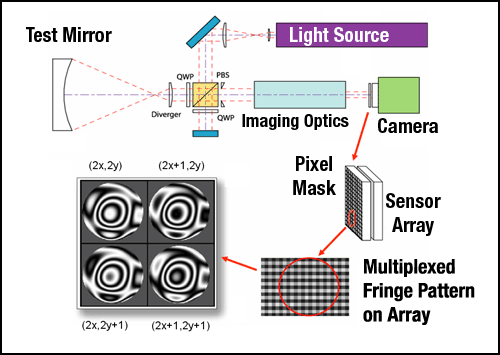
Image Credit: 4D Technology.
Dynamic Fizeau Interferometers Measure in Challenging Environments
Dynamic Fizeau interferometers are capable of measuring in noisy settings without vibration isolation. A dynamic Fizeau interferometer performs more precise measurements in the presence of vibrations and when a number of data frames are averaged.
Since vibration-immune Fizeau instruments can work without isolation, they measure effectively in production floor settings. They can be used in cleanrooms, where noisy air handlers and pumps make temporal phase-shifting measurements very difficult.
Dynamic systems can also be utilized within pressure chambers to quantify space-bound optics at the time of cryo-vacuum testing that mimics conditions in space.
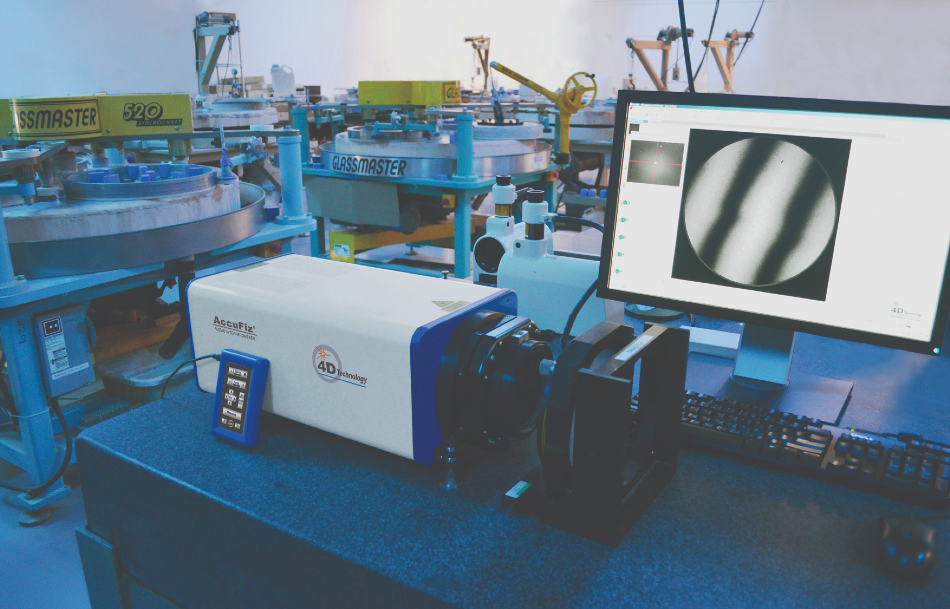
Image Credit: 4D Technology.
4D Technology’s Range of Fizeau Laser Interferometers
4D Technology’s Fizeau interferometers have continually spearheaded the industry in terms of innovation and high performance. 4D Technology pioneered the advancement of dynamic interferometry, created short coherence source models for quantifying plane-parallel optics, headed the field with high-resolution metrology for quantifying aspheres and steep slopes, and developed a wide range of mounts and accessories for Fizeau interferometers.
The 4D Fizeau interferometer comes with industry-leading analysis software, and the available wavelengths range from 193 nm to 10.6 µm and apertures range from 33 to 800 mm. These aspects make the 4D Fizeau interferometers superior to other systems in terms of flexibility, value, and long-term investment value.
4D Fizeau Laser Interferometer Products
AccuFiz Fizeau Laser Interferometers
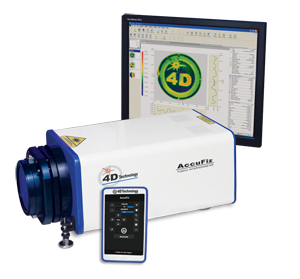
Image Credit: 4D Technology.
The AccuFiz Fizeau laser interferometers are proven, flexible, and affordable, and can fit well in limited laboratory spaces. They provide high stability in any kind of environment.
With apertures ranging from 33 to 600 mm and wavelengths ranging from 355 nm to 1.064 µm, the AccuFiz systems are available for many different applications.
- AccuFiz Infrared (IR) Laser Fizeau Interferometers
- AccuFiz Visible and NIR Fizeau Interferometers
- AccuFiz Surface Isolation Source Fizeau Interferometers
- AccuFiz Large Aperture Fizeau Interferometers
- AccuFiz High Resolution Fizeau Interferometers
FizCam Short-Coherence Fizeau Interferometers
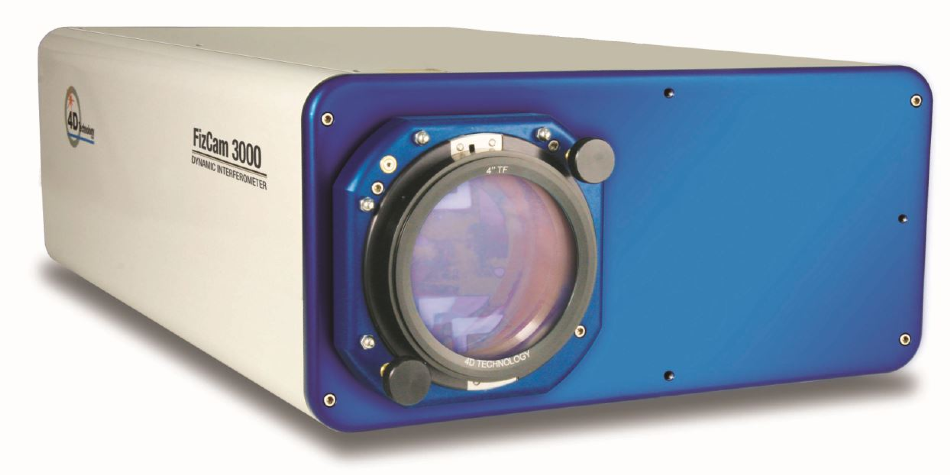
Image Credit: 4D Technology.
The FizCam Short-Coherence Fizeau interferometers quantify both sides of parallel, transparent optics measuring as thin as 200 µm, solid cavities like etalons (laser rods), remote cavity test setups, and surfaces in multi-surface optical systems.
- FizCam 12″ Aperture Short Coherence Fizeau interferometers
- FizCam Short Coherence Fizeau interferometers
- Fizeau interferometer optics, mounts, and accessories